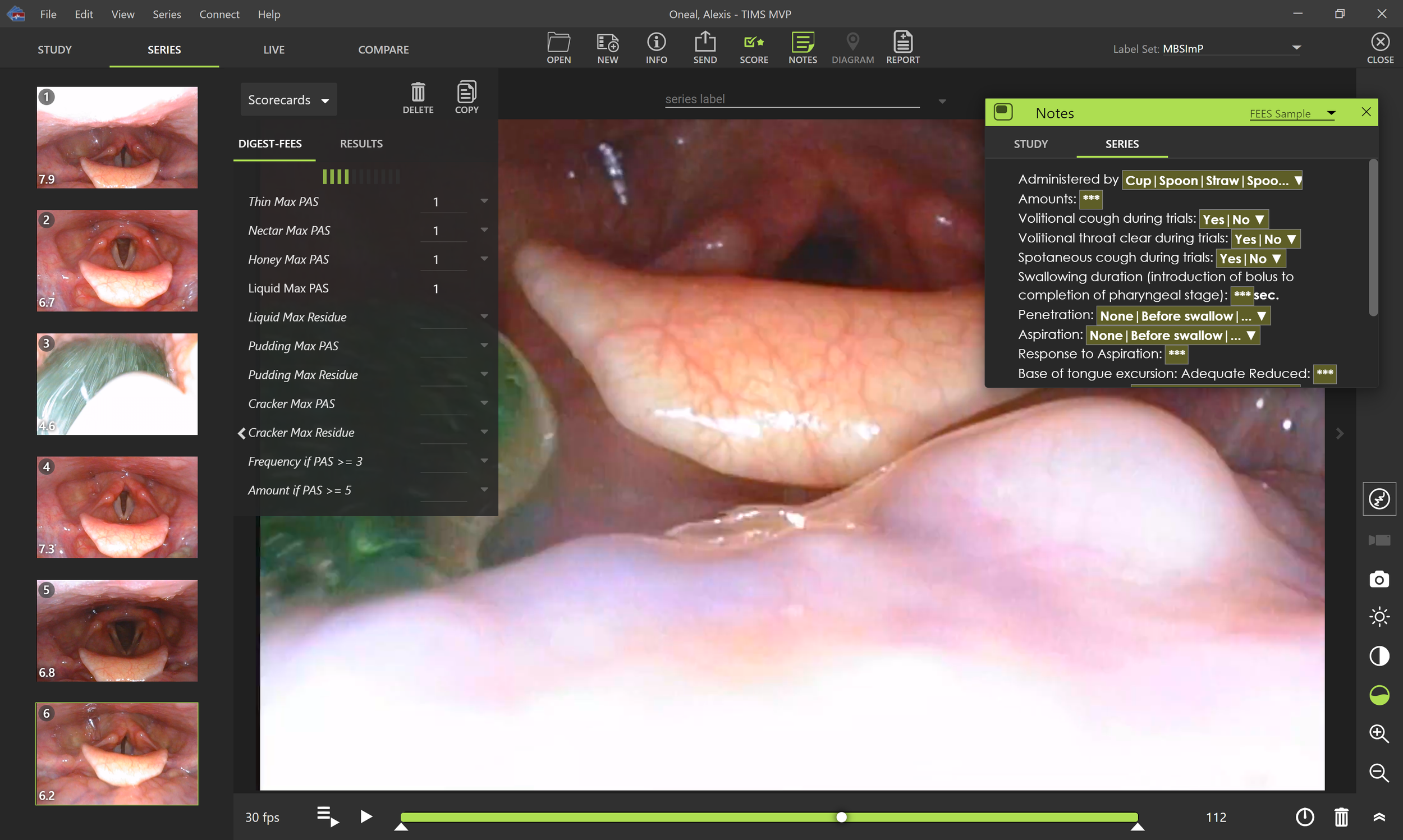
SOLUTIONS
TIMS MVP for FEES
With TIMS MVP, you can incorporate FEES into your practice using a workflow you already know and trust.
Validated for use with all endoscopes
USB, traditional towers, and single-use scopes
Archive to any PACS or VNA
Includes synchronized audio
SwallowDetection automatically identifies whiteout
PatientView provides biofeedback with internal and external recording
Max resolution for best diagnostic image quality
Optimizes study size for efficient storage on PACS/VNA
FDA-cleared medical device
Solutions for any Scope
We support any FEES configuration including traditional stacks, single-use, and USB scopes. Clinicians worldwide are connecting their Olympus, Atmos, PatCom, Optim, Karl Storz, Pentax, Ambu, and JEDMED scopes to TIMS MVP for FEES.
“Our Speech Language Pathology team has been very happy integrating TIMS with our FEES system. It has allowed us to upload videos directly into the EMR and allowed physicians to view them and collaborate with our SLP team. We love the workstations, annotation, playback, touch screen monitors and ease of use that TIMS offers. It has helped our team be more efficient with completing the FEES, which results in seeing more patients. Also, the support team with TIMS is great to work with and always willing to help”.
Elizabeth Kay Hill, Acute Care OT/SLP
Acute Care Occupational Therapy/Speech Language Pathology Manager
Spartanburg Medical Center
TIMS MVP simplifies working with lengthy FEES studies by allowing easy extraction of sub-clips, while offering a robust suite of diagnostic tools in a modern, intuitive interface.
“TIMS MVP for FEES can significantly improve both patient care and operational efficiency in clinical teams.”
Claire Petersen, MS, CCC-SLP
Speech Therapy Clinical Supervisor, Mercy Medical Center
Reimagine your workflow with TIMS Review
TIMS MVP allows recorded studies to be sent to a TIMS Review station in the SLP office for analysis using semi-automated tools. This workflow frees up endoscopic equipment for additional evaluations, allowing more patients to be seen per day.
With a myriad of analysis and measurement tools that feed directly into customizable reports, studies are completed accurately in a fraction of the time.
-
When advocating for FEES, it is important to understand current evidence, the ability to demonstrate the return on investment, and have an open mind to understanding the goals of the administrative team. Here are a few quick facts to help you get started:
FEES has been used in clinical practice for dysphagia since 1988. It is sensitive, predictive, practical, and is a valuable evaluation and treatment tool.
FEES is safe, well tolerated, and significantly impacts patient outcomes. There is no concern for radiation exposure, no time limit restraints in conduction, it uses regular foods and liquids, and can be conducted in a variety of settings.
The use of instrumental evaluations can help reduce healthcare costs and improve patient outcomes.
-
Flexible endoscopic evaluation of swallowing (FEES): Code 92612
Sensory testing (FEEST): Code 92616
-
When considering which scope to purchase, a variety of aspects need to be considered including cleaning, image quality, and more. Our team is happy to assist you in this process.
-
TIMS is compatible with any scope. SLPs worldwide are using TIMS in conjunction with scopes from Olympus, Pentax, Ambu, Atmos, Optim, PatCom, Jedmed, and Karl Storz.
FEES FAQS
FEES Resources

Looking for pricing, more information, or a live demo?
Complete the form and a member of our team will be in touch.









